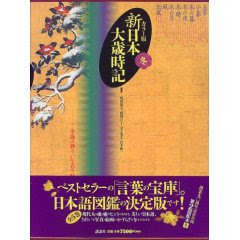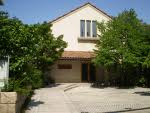[ . BACK to WORLDKIGO TOP . ]
:::::::::::::::::::::::::::::::::::::::::::::::::::::::::::::::::::::::::::::::::::::::::::::::::::
Inahata Teiko 稲畑汀子
Teiko Inahata

I see her often in TV programs of various kinds.
Her kindness and energy is very impressive.
Gabi Greve
:::::::::::::::::::::::::::::::::::::::::::::::::::::::::::::::::::::::::::::::::::::::::::::::::::::
Born in 1931, she learned haiku from her grandfather Takahama Kyoshi and father Takahama Toshio.
She edits the haiku magazine “Hototogisu” and selects haiku entries for the Asahi Newspaper. She is the president of the Japan Traditional Haiku Association, the director of the Kyoshi Memorial Museum and an adviser to Haiku International Association.
Her work in Japanese includes several haiku collections and books dealing with haiku.
..hia.com/
Japanese Reference
:::::::::::::::::::::::::::::::::::::::::::::::::::::::::::::::::::::::::::::::::::::::::::::::::::::
Basic Conditions of Japanese Language Haiku
Inahata Teiko
It is very important that you feel free to write a haiku your way.
But there are certain basic conditions which you as a haiku poet are supposed to observe.
Read her instructions here:
Invitation to Haiku
© Inahata Teiko
:::::::::::::::::::::::::::::::::::::::::::::::::::::::::::::::::::::::::::::::::::::::::::::::::::::
NATURE AND OUR LIFE
--- Haiku Living Together with Nature ---
"Haiku in Twelve Months"
January February March April May June July
August September October November December

Books by Inahata Teiko
日本伝統俳句協会
INVITATION TO HAIKU
国際俳句交流協会
:::::::::::::::::::::::::::::::::::::::::::::::::::::::::::::::::::::::::::::::::::::::::::::::::::::
December 2010
She was driving on her way back from Matsuyama to Tokyo.
Near Tsuyama, she got into a traffic jam and tried a different road ... but alas ...
to avoid a traffic jam
another traffic jam -
mountain road in winter
. juutai o sakeshi juutai fuyu yamaji
more haiku about traffic jams
百年の老舗を守り藍植うる
.hyakunen no shinise o mamori ai uuru .
:::::::::::::::::::::::::::::::::::::::::::::::::::::::::::::::::::::::::::::::::::::::::::::::::::
朧夜の町かどに聞く美濃仁輪加
oboro ya no machikado ni kiku Mino niwaka
on a hazy spring night
in all corners of Mino you hear
the festival songs
Mino matsuri 美濃祭 Mino festival
:::::::::::::::::::::::::::::::::::::::::::::::::::::::::::::::::::::::::::::::::::::::::::::::::::::
芦屋市はわがまほろばよ燗熱く
Ashiya shi wa waga mahoroba kan atsuku
the town of Ashiya
is my land of bliss -
the sake flask is warm
For the NHK Haiku Okoku meeting in December she had invited the participants to the Kyoshi Memorial Museum in Ashiya.
She had ordered the caretakers not to sweep the leaves of the large keyaki zelkova tree and all could walk and enjoy the crunching sound of the yellow leaves on the ground.
mahoroba
refers to an old poem of the Kojiki, where the land of Yamato is called like this in a poem byMotoori Norinaga
大和は のまほろば たたなずく
あおかき山ごもれるやまとしうるわし
Yamato wa kuni no mahoroba tatanazuku
Aokaki-yama gomoreru Yamato shi uruwashi.
Yamato is
The highest part of the land;
The mountains are green partitions
Lying layer upon layer,
Nestled among the mountains,
How beautiful is Yamato !
Tr. Michael Marra
.................................................................................

Ashiya Kyoshi Memorial Museum of Literature
虚子記念文学館 . 兵庫県芦屋市
http://www.kyoshi.or.jp/e-index.htm
On display are handwritten poems on scrolls, paper strips and other media, plus letters, manuscripts and other paraphernalia recounting the author’s interactions with scholars and poets of the likes of Shiki Masaoka, Soseki Natsume and Hekigotou Kawahigashi.
In the library, visitors can read the Hototogisu journal of poetry that has continued from 1897 to today, Kyoshi’s writings, and books and journals on poetry.
:::::::::::::::::::::::::::::::::::::::::::::::::::::::::::::::::::::::::::::::::::::::::::::::::::::
. WKD : Repetition used in haiku
samples by Inahata Teiko
:::::::::::::::::::::::::::::::::::::::::::::::::::::::::::::::::::::::::::::::::::::::::::::::::::::
. . . . . BACK TO
Introducing Japanese Haiku Poets
::::::::::::::::::::::::::::::::::::::::::::::::::::::::::::::::::::::::::::::::::::::::::::::::::
3/01/2010
Inahata Teiko
Subscribe to:
Post Comments (Atom)







1 comment:
mahoroba まほろば
and the Kappa watergoblin
Post a Comment